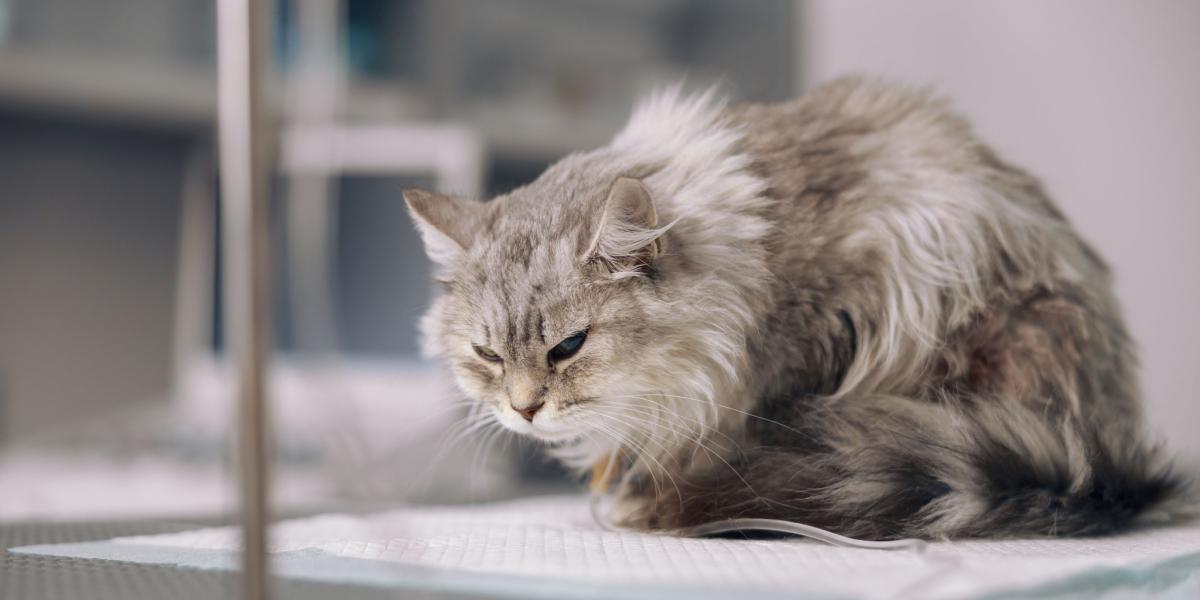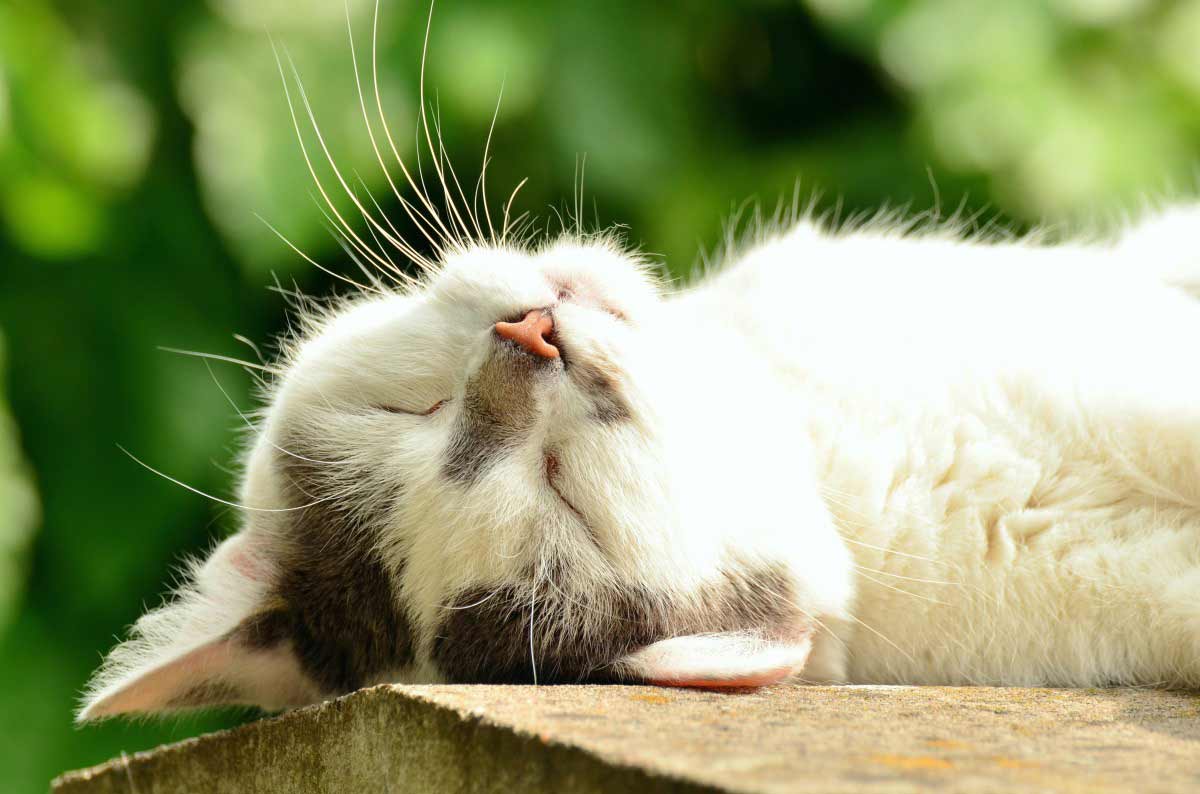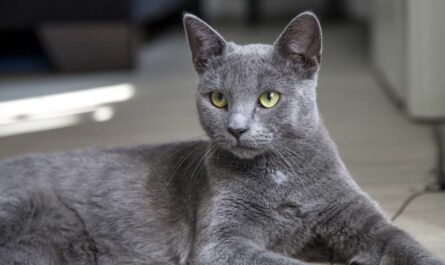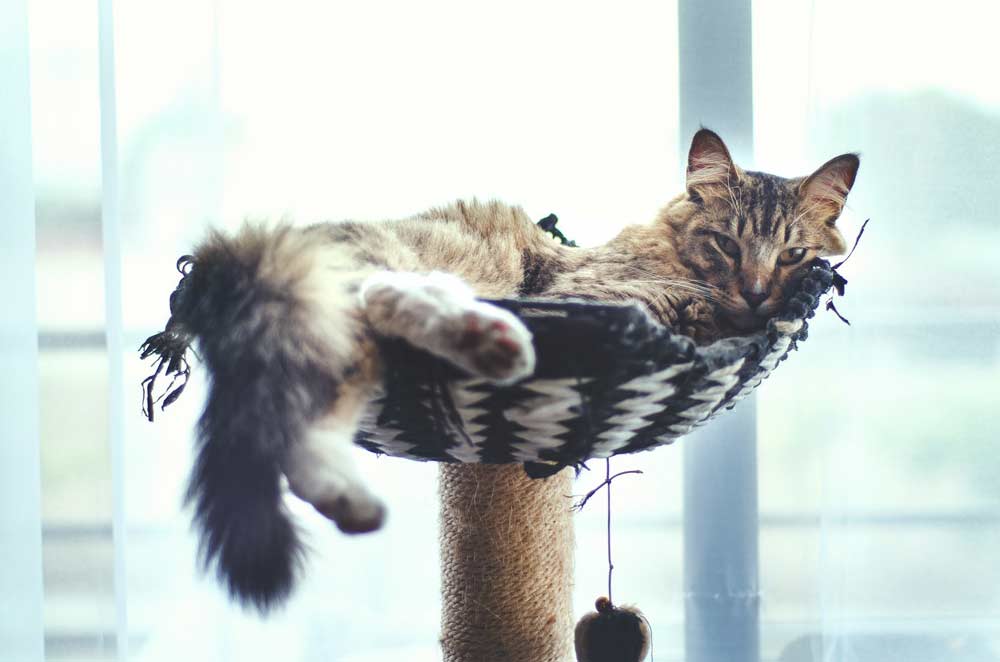How to tell if your cat is in pain after surgery? The silence from the surgery recovery room was disconcerting. My sleek black cat, usually a symphony of purrs and meows, lay silent, eyes half-closed, his stillness a stark contrast to his usual vibrancy. It wasn’t until I knelt beside him, a whisper of worry brushing my throat, that I noticed the subtle tremor in his paw, the flicker of pain in his emerald eyes. It was a silent plea, a whisper in the feline language of discomfort, a reminder that cats, masters of stoicism, often mask their pain in ways only the most attentive eyes can decipher. This article will give you insight on how to tell if your cat is in pain after surgery. Keep reading.
This is the challenge we face – understanding the whispers of pain in our feline companions after surgery. While dogs whimper and lick their wounds, cats cloak their agony in a veil of normalcy, making it crucial to become translators of their subtle cues. This guide will equip you with the tools to hear their hushed cries, recognize the hidden language of pain, and become an advocate for their comfort during recovery.
How to tell if your cat is in pain?
- Decreased energy and activity levels
- Inappropriate elimination outside the litter box
- Limping
- Altered breathing patterns
- Changes in posture and facial expressions
- Reduced food intake
- Increased instances of hiding
- Shaking and trembling
- Abnormal body postures
- Heightened aggression
- Alterations in body contour
- Reluctance to be picked up
- Excessive panting
- Changes in grooming
- Reduced appetite and thirst
- Shifts in behavior
- Alterations in sleep patterns
The Feline Enigma: Why Detecting Pain in Cats is Tricky
Beyond the Ouch: A Guide to Recognizing Pain Cues
Becoming adept at deciphering the enigmatic feline language of pain necessitates a blend of unwavering vigilance and profound empathy. Delving into the intricate nuances of a cat’s behavior provides an invaluable key to recognizing their silent suffering. Here, we unravel the subtle whispers that beckon attention, manifesting in behavioral changes that betray underlying discomfort. Here are some whispers you should listen for:
Behavioral Changes
Unraveling the Tapestry of Activity
Witnessing a once vibrant and playful cat succumb to listlessness is akin to witnessing a fading star in the feline constellation. The subtleties lie in the nuances of their activity level. Observe with meticulous eyes as their zest for toys wanes, replaced by a disinterested demeanor. A cat withdrawing from the joy of exploration and seeking solace in secluded spaces signals a shift from exuberance to a silent struggle against pain.
Appetite: A Palpable Barometer of Pain
The epicurean delight that typically characterizes a cat’s approach to food transforms into a melancholic symphony of loss when pain takes residence. The signs are discernible in their culinary habits. Note the diminished interest in nourishment, reflected in smaller portions ingested or the outright rejection of treats once relished. It is within the realm of their appetite that the narrative of pain is eloquently inscribed.
Vocalization: Meows as Cryptic Cries
The feline vocal repertoire, often shrouded in mystery, undergoes a metamorphosis when the pain becomes the maestro of their distress. Whining, a rarity in the feline lexicon, gives way to altered meows that echo the silent cadence of suffering. The once familiar pitch is disrupted, replaced by an elevated register or, in extreme cases, the ominous hiss—a cryptic cry signaling the depths of their anguish.
Grooming Habits: Unraveling the Threads of Discomfort
In the delicate ballet of self-care, a cat’s grooming habits provide a canvas where the brushstrokes of pain are vividly portrayed. Excessive grooming emerges as a paradoxical response, a desperate attempt to soothe unseen wounds. Conversely, the neglect of one’s coat becomes a silent plea for respite, as the cat grapples with discomfort in silence. Pay heed to the areas that receive an undue focus, unraveling the map of potential pain points.
Litter Box Ballet: A Choreography of Pain
The feline penchant for privacy in their litter box activities becomes a stage where pain performs its clandestine choreography. The difficulty in using the litter box, an errant act of urinating or defecating outside its confines, and the strained effort expelled during elimination form a trinity of distress signals. Particularly poignant are instances linked to surgical interventions on the abdomen or urinary tract, where the litter box becomes a canvas painted with the hues of pain.
Postural Alterations
Gait and Posture
Observing your feline companion’s movements and posture provides crucial insights into their well-being. An unsteady gait, a subtle limp, a hunched posture, or any peculiar way of holding body parts might be indicative of underlying pain or discomfort. Take note of the nuances in how your cat sits, lies down, and ambulates, comparing it to their usual demeanor. Any deviation could be a subtle cry for attention to a potential issue affecting their comfort and health.
Sleeping Positions
Cats, renowned for their regal repose, often communicate through their sleeping habits. Keep a keen eye on any alterations in their sleeping patterns. While cats in pain may exhibit an increased tendency to sleep excessively, the key lies in identifying unconventional positions. Do they curl up tightly, as if shielding themselves, or stretch their limbs away from the body? Unusual sleeping postures, especially when deviating from their norm, can be a red flag, warranting a closer examination of their overall well-being. Even the slightest change during naptime can harbor significant clues about their comfort levels.
Facial Expressions
Vocalizations
Changes in Pitch
Cats, known for their subtle vocal expressions, occasionally reveal distress or discomfort through variations in pitch. A departure from their typical meows, characterized by higher tones or prolonged sounds, might be indicative of an underlying issue. The nuanced tonal shifts carry emotional cues, and deciphering the emotional tone behind the altered meow is crucial. It becomes an auditory puzzle, requiring attentive ears to discern potential pain or distress in the feline’s vocal repertoire.
Frequency and Duration
Beyond the mere pitch, the frequency and duration of a cat’s vocalizations serve as vital indicators of its well-being. Even when the meows are soft, an uptick in the frequency may be a subtle plea for attention to discomfort. Observing whether your feline companion engages in more frequent meowing than usual becomes essential. The urgency or distress conveyed by these vocalizations adds layers to the mystery, requiring a keen observer to decode the nuanced language of feline distress.
Increased Sensitivity to Touch
Flinching or Withdrawal
Cats, typically receptive to gentle touch, undergo a transformation when pain disrupts their usual demeanor. Affectionate felines may unexpectedly withdraw or exhibit subtle flinching when touched, particularly in areas near recent surgical interventions. The once comforting and familiar act of petting now requires a nuanced interpretation of their body language. Paying meticulous attention to these subtle shifts becomes imperative, as the feline’s response to touch becomes a delicate dance of signals, revealing the discomfort that eludes verbalization.
From Observation to Action: Strategies for Pain Management
Once you’ve deciphered your cat’s whispers of pain, it’s time to take action. Here are some key strategies for providing relief and support:
Open Communication with Your Veterinarian
Establishing open lines of communication with your veterinarian is paramount when deciphering the subtle whispers of pain from your feline companion. Make it a priority to share detailed observations about your cat’s behavior and demeanor, delving into nuances that might otherwise be overlooked. No observation is too minor; even the most subtle changes could be crucial indicators of your cat’s well-being. Feel empowered to reach out to your veterinarian, whether through a call or a visit to the clinic, expressing any concerns that may arise regarding your cat’s comfort or recovery. This proactive approach ensures that your veterinarian is well-informed, enabling them to provide tailored advice and recommendations based on your cat’s unique situation.
Pain Assessment Tools
In the realm of veterinary care, pain assessment tools serve as invaluable instruments for monitoring the intricate spectrum of discomfort that your cat may be experiencing. Familiarize yourself with the intricacies of pain-scoring scales employed by veterinarians to quantify and assess pain levels. Regularly tracking your cat’s score not only establishes a comprehensive understanding of their pain dynamics but also equips you and your veterinarian with a tangible metric to evaluate the efficacy of the implemented pain management strategies. This vigilance allows for prompt adjustments if the need arises, ensuring that your cat receives optimal care throughout their healing process.
Prescribed Pain Medication
Adhering scrupulously to your veterinarian’s directives regarding prescribed pain medication is pivotal in providing your cat with the relief they need. Precision in dosage and adherence to the specified schedule are imperative for effective pain management. Resist the temptation to modify the medication dosage or skip doses independently, as this could jeopardize the well-calibrated treatment plan. The meticulous monitoring of your cat for any potential side effects becomes a crucial responsibility. Promptly reporting any observed side effects to your veterinarian ensures that they can swiftly address and modify the treatment plan if necessary, safeguarding your cat’s well-being while promoting a smooth recovery journey.

Case Studies: Unmasking Hidden Pain in Different Scenarios
The Lethargic Senior
As felines gracefully navigate the sands of time, an older cat’s diminished activity level is often regarded as a natural consequence of the aging process. Yet, behind the veil of presumed senescence, a clandestine pain may be lurking. Should you witness a sudden and profound surge in lethargy post-surgery, it becomes imperative to eschew the facile attribution to the sands of time. Rather, embark upon a meticulous investigation, for this altered state might be an intricate tapestry woven with the threads of concealed discomfort. Scrutinize the nuanced shifts in behavior or appetite that accompany this lethargy, and with unwavering vigilance, consult with your discerning veterinarian. In doing so, one endeavors not merely to dismiss the surface ripples of aging but to fathom the unseen depths of potential pain.
The Overly Affectionate Cat
In the aftermath of a surgical sojourn, a peculiar metamorphosis may cloak your feline companion—the emergence of an unbridled affection. While, on the surface, an intensified desire for closeness may be perceived as a benign postoperative behavior, the astute observer peels back the layers to unveil a potential cry for solace in the face of pain. Discern whether this newfound clinginess is accompanied by the subtle, yet revelatory, cues of discomfort—vocalizations that resonate with the language of distress, shifts in posture indicative of unease, or a perceptible dip in overall activity. Resist the inclination to rebuff the offered affections; instead, extend a gentle embrace while concurrently keeping a watchful eye on the mosaic of potential discomfort signals.
The Vocal Feline
In the symphony of feline communication, a sudden crescendo in vocalization can herald a disconcerting undercurrent of pain or distress. What was once a realm of hushed purrs and soft meows may undergo a jarring transformation into a cacophony of more frequent or higher-pitched vocal expressions. To decipher this cryptic auditory code, one must attune their senses to the contextual nuances of these vocalizations. It is not merely the frequency or pitch but the situational backdrop against which these sounds unfold that provides the key to unraveling the mystery. Concurrently, meticulous observation of other behavioral permutations becomes paramount. In this auditory tapestry, a discerning observer becomes attuned to the subtle echoes of discomfort that reverberate through the vocal repertoire, offering a profound insight into the feline psyche.
Beyond the Band-Aid: Holistic Approaches to Pain Management
While medication plays a crucial role, consider exploring complementary therapies for additional pain relief:
Acupuncture and Massage Therapy
In the realm of feline well-being, the age-old practices of acupuncture and massage therapy stand as potential gateways to pain relief. Delving into the ancient art of acupuncture, wherein tiny, sterile needles are strategically inserted into specific points on the cat’s body, one can tap into the body’s natural healing mechanisms. This alternative therapy has shown promise in managing pain in our feline companions. However, caution must be exercised, as proficiency in feline anatomy is paramount. It is imperative to seek the expertise of a qualified professional well-versed in the nuances of feline physiology.
Massage therapy, another avenue for potential relief, involves the skillful manipulation of muscles and tissues to alleviate pain and enhance overall well-being. Imagine the gentle strokes and kneading motions, administered with a delicate touch to soothe aching joints and muscles. Always, and without exception, consult your vigilant veterinarian for counsel tailored to your cat’s individual needs. Their insights will guide you toward the right therapy, ensuring a holistic approach to your feline friend’s comfort and recovery.
Physical Rehabilitation
Post-surgery or injury, the path to recovery for our feline companions is often paved with therapeutic movements orchestrated by a knowledgeable veterinarian or an animal physical therapist. Picture a carefully crafted symphony of gentle physiotherapy exercises, meticulously designed to nurture the body back to its full potential. Each exercise, a note in the composition, resonates to promote healing, diminish pain, and restore lost mobility. The vigilant guidance of a medical maestro ensures that these exercises are precisely tailored to your cat’s unique condition, offering a melody of rehabilitation that fosters a swift and effective recovery.
Enrichment and Distraction
Beyond the physical realm, the psychological well-being of our feline companions plays a pivotal role in their overall recovery journey. Enter the realm of enrichment and distraction, where the mind becomes a canvas for healing strokes. Visualize the introduction of puzzle feeders, tantalizingly engaging toys, or even the mesmerizing allure of cat TV – all designed to divert your feline friend’s attention away from discomfort.
In this mental landscape, distractions serve as vibrant brushstrokes, painting a tapestry of engagement and stimulation. Yet, amidst this whirlwind of activity, one must tread with caution. Prioritizing rest becomes paramount, as a delicate balance is struck between keeping the mind occupied and avoiding activities that may prove too taxing for a convalescing cat.
Q&A Corner
How can I tell if my cat is experiencing side effects from pain medication?
When your feline companion is prescribed pain medication, it’s imperative to maintain a vigilant watch over them, keenly observing any shifts in behavior or alterations in their overall health. Common side effects that might manifest include the subtle embrace of drowsiness, bouts of vomiting, troublesome diarrhea, or a tendency towards constipation. These signals, though not uncommon, demand your attention and scrutiny. See why thousands of cats love BoxCat
Be the discerning observer of your cat’s well-being, for in these details, the nuances of their response to medication might be revealed. If, perchance, you discern any disconcerting transformations, do not tarry—reach out to your veterinarian promptly. Swift communication with the healthcare provider ensures timely adjustments to the treatment plan, assuring your feline friend’s comfort and recovery.
How can I handle unexpected behavior changes due to pain medication?
Should your cherished cat exhibit unexpected behavioral shifts, an empathetic response coupled with practical measures is warranted. A heightened vocalization, agitated demeanor, or even an uncharacteristic display of aggression could be attributed to the pain medication coursing through their system. In such instances, the paramount concern should be the safety of both your feline companion and yourself. Cat accessories on Amazon
A judicious approach involves confining the cat to a secure space, providing an environment where their distress can be mitigated. Simultaneously, it’s imperative to establish communication with your veterinarian promptly. Understand that these behavioral aberrations, while disconcerting, are typically transient and seldom a cause for undue alarm unless they persist in a severe or prolonged manner. Timely professional guidance ensures a smoother transition through this transient phase, safeguarding the welfare of both you and your feline companion.
When is it safe to resume normal activities after surgery?
The delicate dance of post-surgery recuperation necessitates an adherence to the nuanced guidance provided by your veterinarian. Each surgery, a unique ballet of medical intervention, mandates a tailored approach to resume normal activities. The convalescence trajectory of your cat, intricately linked to the type of surgery and the individual nuances of their recovery, demands a judicious balance.
Rigorously adhere to the prescribed limitations on strenuous activity, playful escapades, or exuberant jumping. These restrictions are not punitive but rather a carefully calibrated orchestration to facilitate a seamless healing process. The green light for a return to customary routines will only be given when your vigilant veterinarian, attuned to the intricacies of your cat’s recovery, deems it safe to do so. In this interplay of caution and recovery, the harmonious symphony of your cat’s well-being finds its melody. RPM 3.0 – 60% CONVERSION & Money for Affiliate Marketing
Resource List
- International Association for Animal Pain Management: https://ivapm.org/
- American Animal Hospital Association: https://www.aaha.org/
- The Association for Pet Loss and Bereavement: https://www.aplb.org/about-us/
Personal Story
My rescue cat, Sabina, once underwent a delicate leg surgery. While she initially seemed fine, I noticed a subtle change in her usual purring rhythm – it was almost raspy, hinting at a discomfort she wasn’t vocalizing. By paying close attention to these whispers, I alerted my veterinarian, who adjusted her medication regimen. Witnessing Luna return to her playful, purring self reminded me of the profound power of understanding these feline secrets and advocating for their well-being.
Remember, by becoming fluent in the language of feline pain, you can ensure a smoother, more comfortable recovery for your furry companion, strengthening the bond of love and trust you share.
Final thought
Unmasking the whispers of pain in your feline companion after surgery requires vigilance, empathy, and open communication with your veterinarian. By learning to decipher the subtle cues, you can become their voice, ensuring a comfortable and pain-free recovery journey. Remember, even the smallest meow can hold a world of meaning, and attentive listening is the key to unlocking their unspoken cries for help.
Other Interesting Articles
- How To Take Care Of A Kitten: A Guide For New Pet Owners
- Why Do Cats Chirp? Major Reasons Behind This Cute Sound
- 10 Common Reasons Why Cats Suckle? How To Discourage
- 12 Reasons Why Cats Meow So Much: How To Mitigate
- 9 Common Reasons Why Cats Chirp or Chatter: 5 FAQs
- Cat Zoomies: Why Does A Cat Get Them? When to Call a Vet?
- Burmilla Cat Breed: Profile, Traits, Grooming, Health, Care
- Aegean Cat Breed: Profile, Traits, Grooming, Health, Care
- American Wirehair Cat Profile, Traits, Grooming, Health, Care
- American Shorthair Cat Profile, Traits, Grooming, Health, Care
- American Polydactyl Cat Profile, Traits, Grooming, Health, Care
- American Longhair: Profile, Traits, Grooming, Health, Care
- American Curl Cat Profile, Traits, Grooming, Health, Care
- Asian Semi-Longhair Cat Profile, Traits, Grooming, Health, Care
- California Spangled Cat: Profile, Traits, Grooming, Health, Care
- Burmilla Cat Breed: Profile, Traits, Grooming, Health, Care
- British Shorthair Cat: Profile, Traits, Grooming, Health, Care
- Brazilian Shorthair Cat: Profile, Traits, Grooming, Health, Care
- Bombay Cat Breed: Profile, Traits, Grooming, Health, Care
- British Longhair Cat: Profile, Traits, Grooming, Health, Care



